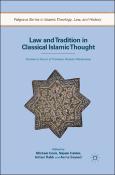Options
Two commentaries on Najm al-Dīn al-Kātibī’s al-Shamsiyya, copied in the hand of David b. Joshua Maimonides’ (fl. ca. 1335-1410 CE)
Date
2013
Author(s)
Abstract
In the medieval, late medieval, and premodern world of Islam, Muslims and Jews (as well as Christians, for that matter) constituted a unique cultural and intellectual commonality. They shared Arabic (at times also Persian) as their common language and often read the same books, so that a continuous, multidimensional exchange of ideas, texts, and forms of discourse, particularly in the rational sciences, was the norm rather than the exception. This has been amply demonstrated for the ninth through twelfth centuries CE.^2 By contrast, Jewish-Muslim intellectual commonalities of later periods have so far barely been explored in either Judaic or Islamic Studies. In both fields and for a variety of reasons, the scholarly investigation of philosophy and related disciplines during the post-Avicennan period is still in the beginning phase. For Jewish intellectual history in Arabic, the rich, though only partly explored, holdings of the various Geniza collections around the world still hold many surprises. This chapter focuses on such a case.
File(s)
Loading...
Name
Schmidtke_2013_Two Commentaries.pdf
Size
2.81 MB
Format
Adobe PDF
Checksum (MD5)
0f82f619c5ead17e3b15e53364384a46